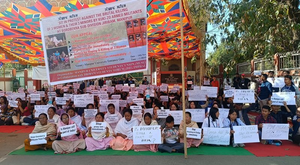10 Years of SBM: Noted economist explains how the initiative transformed lives of women in villages
New Delhi, Oct 2 (IANS) As Swachh Bharat Mission (SBM), one of the flagship schemes of the Modi government, achieves new milestones in making the country cleaner, greener and healthier, many noted experts, journals and studies are taking a deep dive to map the reasons behind its astounding success.
Shamika Ravi, the country’s leading Economist and a Member of the Prime Minister’s Economic Advisory Council (EAC), on Wednesday, explained in detail how the SBM was bringing a sea change in the living standards of the people and the country, as a whole.
“When the SBM was launched in 2014, India had the world’s highest open defecation rate. While the global average at that time stood at just 12 per cent, that of India’s open defecation was more than three times of global average, 40 per cent to be precise,” informed the EAC member.
She said that open defecation has been a major public health issue in the country for decades but it was addressed only after the formation of the Modi govt in 2014.
She further stated that many studies have shown that building toilets and developing open defecation-free zones has brought a lot of benefits for society, including curbing infant deaths to a large extent.
“After 2014, there was a movement to restore public health and dignity through toilets. The last 10 years of data emphatically shows that Swachh Bharat Mission is the biggest public health initiative,” she pointed out.
It was in 2014 that Prime Minister Narendra Modi gave a clarion call for Swachhata and launched a nationwide mission to bring an end to open defecation. With active support from citizens, Swachhata has become a national behaviour and Swachh Bharat Mission household name. Till date, more than 120 million toilets have been built in the past 10 years — a remarkable and spectacular feat in itself.
Shamika Ravi, citing a couple of studies, said that many international bodies as well as journals have applauded the initiatives under the Swachhata Abhiyaan.
“Nature, an international science journal found that more than 60,000 to 70,000 infant deaths were prevented due to SBM. WHO said that SBM helped avert more than 2.5 lakh deaths,” she said.
Further explaining a link between toilet construction and a slump in rape cases, she said that women are most vulnerable during the wee hours when they would visit the fields alone or in groups to defecate. It is during this time that most assault and rape cases happen.
“Construction of toilets has led to a drastic drop in rape and assault cases. There has been a 14 per cent drop in rape cases due to the construction of toilets,” she informed.
Elaborating on SBM’s global appeal, she said that today India stands out in the world in maintaining cleanliness and said that many countries in the South are looking to emulate the high standards of hygiene and health as practised in India.
“Swachh Bharat Mission is not just one of the most important public health initiatives undertaken in modern times but also remains one of the lasting legacies of Modi administration, not just in terms of public health outcomes but also for restoration of dignity for women and girls, particularly across rural areas of the country,” Shamika Ravi remarked.
–IANS
mr/uk




